Japanese Mounjaro recipe
The first time I came across a Japanese Mounjaro recipe, I was curled up with a stack of international baking books during a rainy Asheville afternoon. One photo caught my eye—a golden, cloud-like dessert that seemed to whisper “try me.” I did, and that first bite reminded me of my grandmother’s apple tart: delicate, comforting, unforgettable. Since then, this treat has become a staple in my kitchen. Light, subtly sweet, and filled with character, it’s everything I love about Japanese baking—simple ingredients, thoughtful technique, and that magical moment when flavors just click.
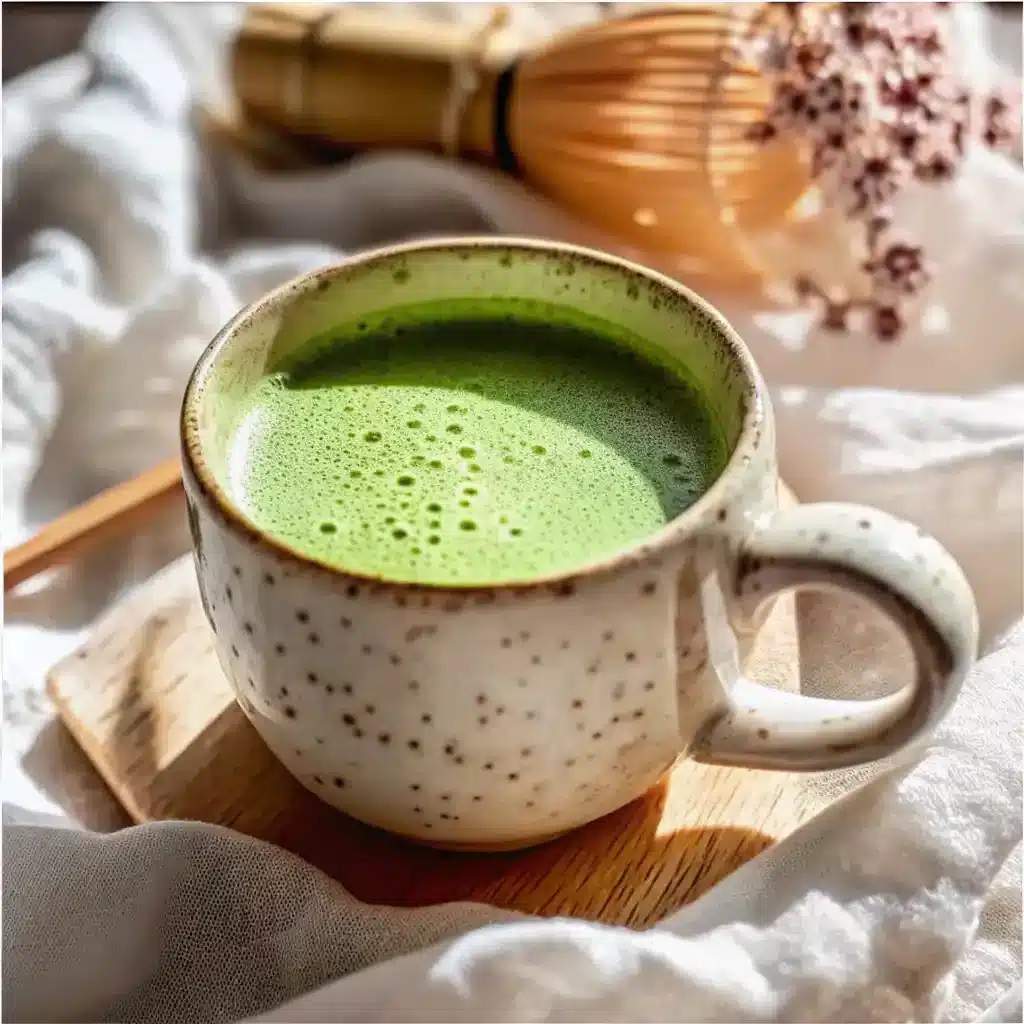
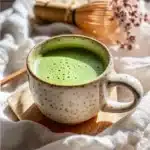
Description
“A calming Japanese wellness drink made from matcha, umeboshi, kombu, and ginger—perfectly balanced for flavor and natural health benefits.”,
Ingredients
1 cup filtered water (160°F)n1/2 tsp matcha powdern1/2 umeboshi plumn1 inch strip kombu seaweedn3 slices fresh ginger`),
Instructions
Heat water to 160°F.nSteep kombu in water for 3–4 minutes, then remove.nStir in matcha powder until fully dissolved.nMash umeboshi with a spoon and stir it in.nAdd ginger slices and steep for 2 more minutes.nServe warm and sip slowly.`),
Notes
Do not boil the water to avoid bitterness.nUse homemade or additive-free umeboshi.nOptional: add a splash of yuzu for citrus flair.`)
Nutrition
- Serving Size: 1
- Calories: 0
- Sugar: 0
- Fat: 0
- Saturated Fat: 0
- Unsaturated Fat: 0
- Trans Fat: 0
- Carbohydrates: 0
- Fiber: 0g
- Protein: 0g,
- Cholesterol: 0
The Japanese Mounjaro Recipe Ingredients & Flavor Secrets
Crafting the perfect Japanese Mounjaro recipe starts with understanding its surprisingly simple yet powerful ingredients. You won’t find refined sugar, dairy, or artificial flavors here. Instead, it’s a natural blend of Japanese pantry staples that work together in harmony—each one chosen not just for taste, but for how it makes you feel.
Essential ingredients list
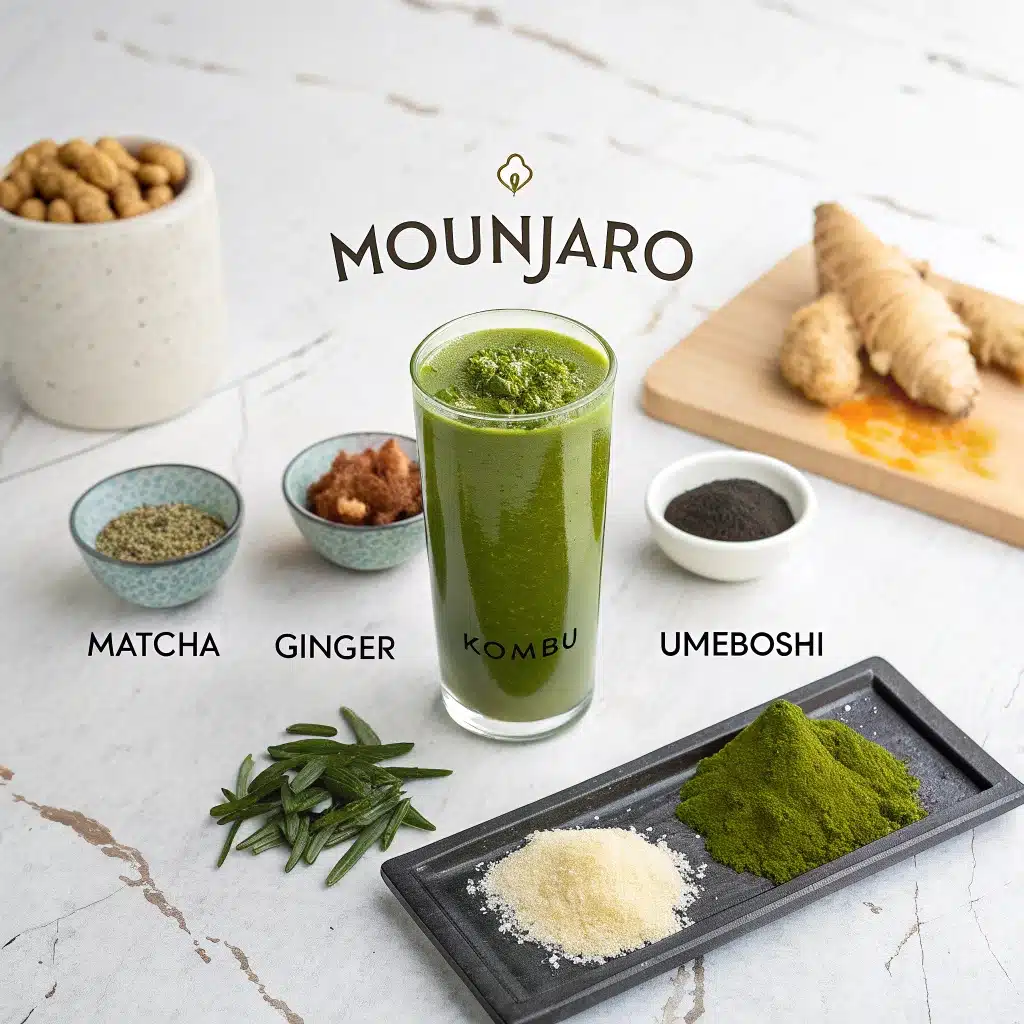
The core of the recipe centers on four ingredients: matcha, umeboshi plum, kombu, and ginger. Matcha gives the drink its signature green hue and grassy, earthy depth. Umeboshi, a pickled plum, adds brightness and tang, balancing the bitterness of matcha. Kombu—a mineral-rich seaweed—lends umami and a savory smoothness, while fresh ginger brings heat, warmth, and gentle spice.
These ingredients are often found in traditional Japanese cuisine and are lauded for their health-supportive properties. Kombu and umeboshi are naturally alkalizing. Matcha is packed with antioxidants. Ginger supports digestion. Combined, they create a soothing, energizing brew that’s far more than a typical wellness tonic.
Flavor notes and ingredient roles
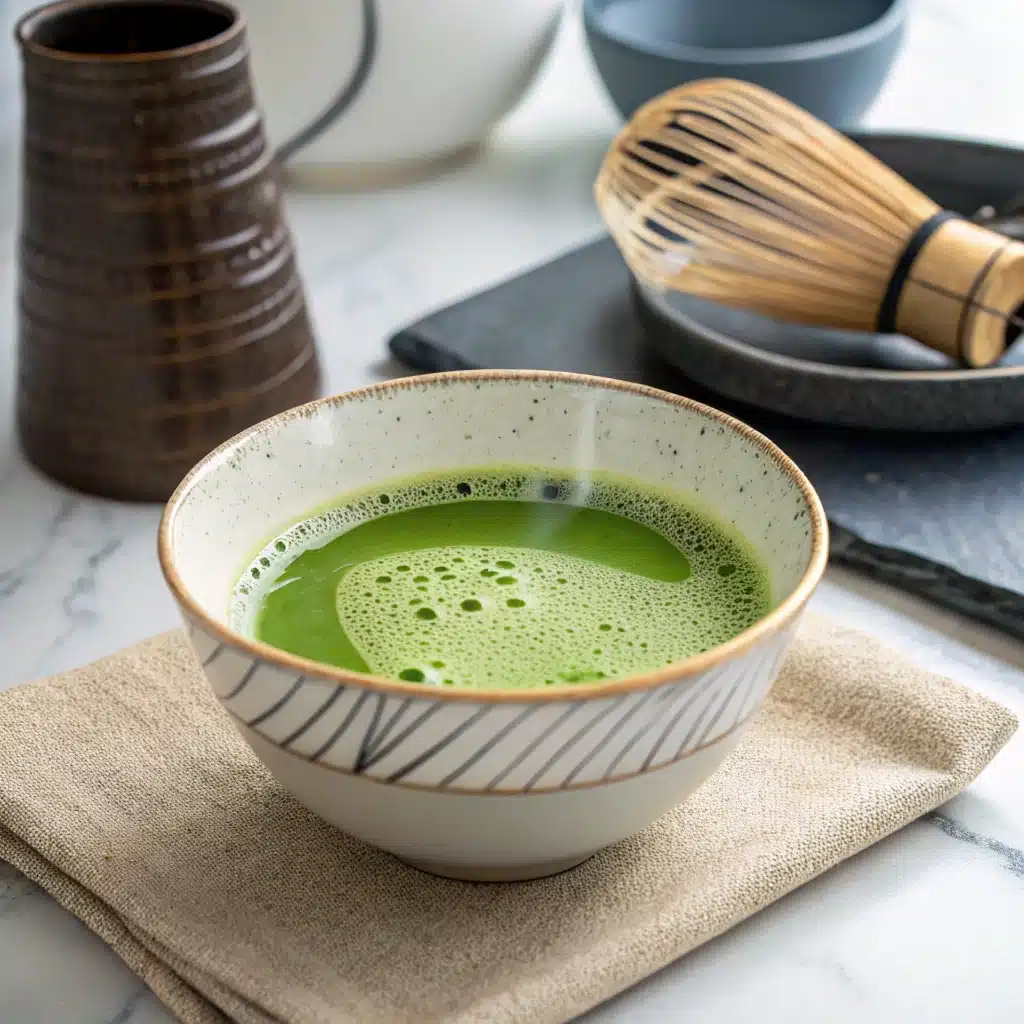
The first sip of this drink is bold—matcha’s slight bitterness leads, but the saltiness of umeboshi cuts through, offering a surprising brightness. Kombu works in the background, rounding out the edges with its mellow umami. Then ginger hits, not harshly, but as a clean finish that warms without burning.
For the best balance, I use filtered hot water—not boiling—around 160°F. This brings out flavor without over-extracting bitterness. My favorite umeboshi is homemade, but store-bought versions with no additives work great too. If you’re new to kombu, start with a small square and steep gently.
It’s this careful attention to balance that makes the Japanese Mounjaro recipe so satisfying—comforting yet uplifting, savory yet refreshing. For ingredient guidance, see my Baking Fundamentals and Ingredient Spotlight on Ginger.
How to Make the Japanese Mounjaro Recipe at Home
Once you’ve gathered the ingredients, preparing your Japanese Mounjaro recipe is all about patience and simplicity. There’s no whisking, baking, or timing stress—just steep, stir, and sip. This part of the process feels almost meditative, which is exactly what I love about it.
Preparing the brew step-by-step
Start by bringing a cup of filtered water to about 160°F—not boiling. Too much heat will dull the delicate notes of matcha and kombu. Add a 1-inch square of kombu to your cup and let it steep for 3–4 minutes. Remove the kombu, then stir in ½ teaspoon of matcha powder until dissolved.
Gently press half of an umeboshi plum with the back of a spoon, then mix it into the warm liquid. It breaks down easily, blending in smoothly and infusing the drink with its distinct tangy flavor. Finally, slice a few thin coins of fresh ginger and stir them in.Allow the mixture to sit for two more minutes so the flavors can meld fully, then enjoy it slowly, savoring each sip.
It’s a drink best served warm—not hot. That way, all the flavors remain balanced. You’ll taste each layer clearly: earthy, salty, tangy, spicy. A beautiful harmony in a simple mug.
Pro tips for perfect balance
The key to nailing this drink every time? Go gentle. Over-steeping kombu makes it bitter. Boiling water scorches matcha.Using too much umeboshi can throw off the balance and dominate the entire flavor profile.Start with small amounts, taste often, and adjust to your preference.
You can prepare ahead by keeping the kombu and matcha in airtight containers at room temperature and chilling the sliced ginger in the fridge.. I’ve even made pre-portioned “Mounjaro sachets” to steep at work—game changer. For more prep advice,
Serving Ideas and Variations for Japanese Mounjaro
What makes the Japanese Mounjaro recipe so appealing is its incredible versatility.. Whether you enjoy it as a morning ritual or a calming evening sip, this drink suits many moods. It’s not just a recipe—it’s an experience you can shape to fit your day.
How to present and enjoy
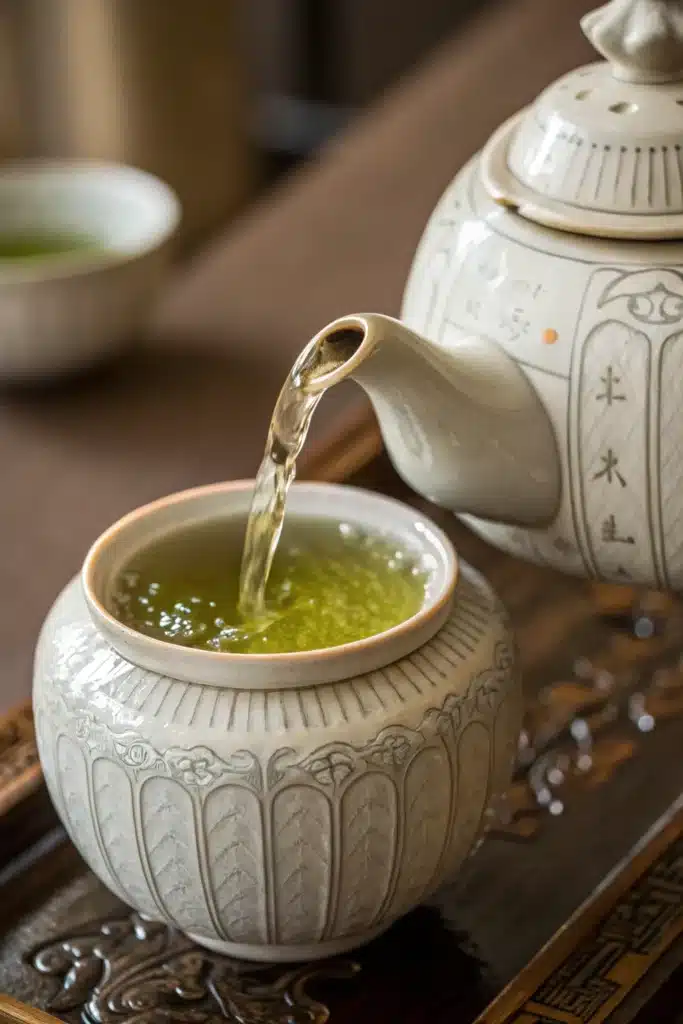
I love serving Japanese Mounjaro in a wide ceramic mug, preferably handmade. There’s something grounding about the warmth of the clay and the soft green hue of matcha mingling with pale ginger. A wooden spoon on the side adds a rustic touch. For an extra special moment, pair it with a simple almond cookie or a slice of my Classic Apple Tart.
You can also garnish with a thin slice of lemon or a few mint leaves to brighten the flavor. This isn’t traditional, but it works beautifully if you want to serve the drink to guests who may not be used to its briny tang.
The experience is best when unrushed. Sip slowly. Let the warmth coat your throat and the ginger finish linger. Think of it as a moment of calm carved into your day.
Storage tips and fun twists
To prepare in advance, simply brew a small batch and store it in an airtight container in the refrigerator for up to a day.. Just give it a gentle stir and reheat before serving—it won’t be as vibrant, but still comforting. Avoid boiling during reheating to preserve flavor.
Looking to switch it up? Try adding a splash of yuzu juice to introduce a bright, citrusy note. Or replace matcha with hojicha for a nuttier, roasted profile. You can even serve it chilled over ice in summer.
For more creative riffs, visit my Cupcake Variation Guide and Dessert Presentation Tips. They’ll help you transform this simple drink into a signature moment.
What are the ingredients in Japanese Mounjaro?
The Japanese Mounjaro recipe typically includes matcha green tea powder, umeboshi (pickled plum), kombu (edible kelp), and fresh ginger. These traditional Japanese ingredients create a savory, slightly tangy, and warming beverage known for its nourishing qualities.
What do doctors say about Japanese Mounjaro?
While there’s no official medical consensus on the Japanese Mounjaro recipe as a treatment, many nutrition-focused practitioners recognize the individual ingredients—like ginger for digestion, matcha for antioxidants, and kombu for minerals—as part of a holistic wellness routine. Always consult your doctor before using it as a supplement.
Is there a natural Mounjaro?
Yes, some people refer to the Japanese Mounjaro recipe as a “natural Mounjaro” because it uses traditional ingredients believed to support metabolism and digestion without synthetic additives. However, it’s not a pharmaceutical and should be seen as a wellness drink, not a medication.
Does Japanese Mounjaro drink work?
If you’re drinking the Japanese Mounjaro recipe for its soothing qualities or to support digestive health, many find it helpful. Its combination of matcha, umeboshi, and ginger offers a natural energy lift and may support gut balance—but results vary person to person
for more recipes follow me in facebook and pinterst
Conclusion
The Japanese Mounjaro recipe isn’t just a drink—it’s a quiet ritual, a return to balance, and a way to reconnect with the body through flavor and simplicity. Whether you’re drawn in by its clean ingredients, its grounding warmth, or its natural wellness appeal, it offers something special in every sip.
From the moment I first tried it, this recipe reminded me of why I love what I do—bringing comfort, culture, and creativity into the kitchen. I hope you give it a try, tweak it to your taste, and let it become part of your own story. Because sometimes, the simplest recipes are the ones we return to again and again.
Cranberry Mocktail Spritzer with Rosemary
Hi, I’m Lenna—a pastry chef and dessert lover from Asheville, North Carolina. My journey with…
Is the Carajillo the Next Espresso Martini?
My passion for baking has always danced alongside a deep love of coffee, a bond…
Summer Drink Two Tropical Fruits
My love for a summer drink two tropical fruits goes way back to sunny weekends…
Lemon Balm for Weight Loss: A Simple Herb That Changed My Routine
lemon balm for weight loss My passion for baking sometimes led to stress and late-night…
Creamy Coconut Limoncello Margarita; My Favorite Summer Indulgence
creamy coconut limoncello margarita that takes me straight back to sun-soaked afternoons on my grandmother’s…
Dubai Style Chocolate Cookie Pie
My first bite of a Dubai style chocolate cookie pie happened in a small cafe…

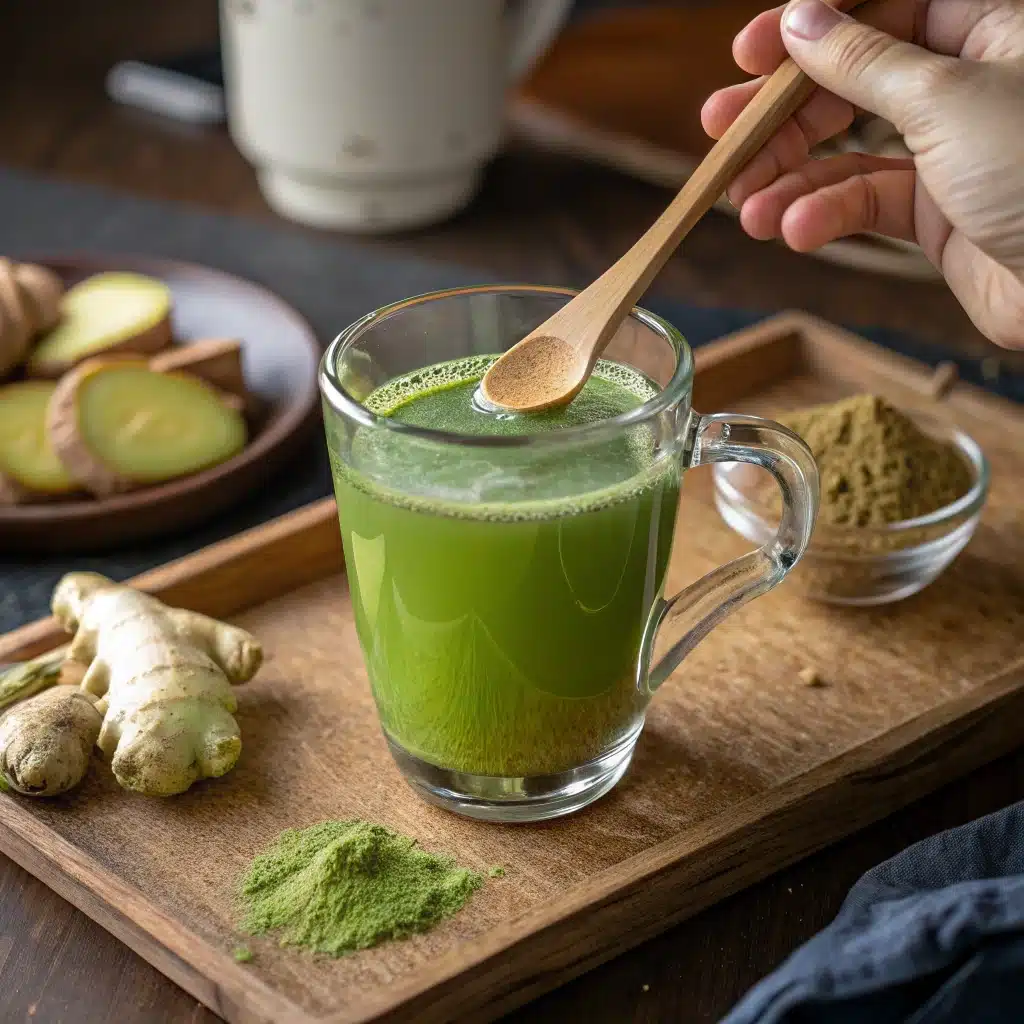
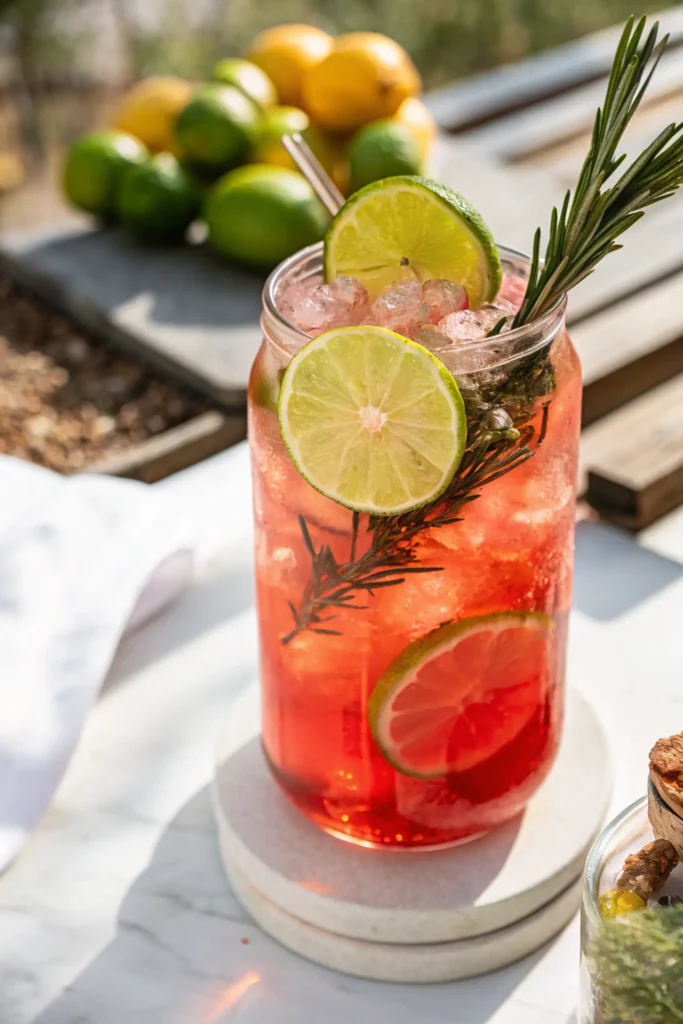
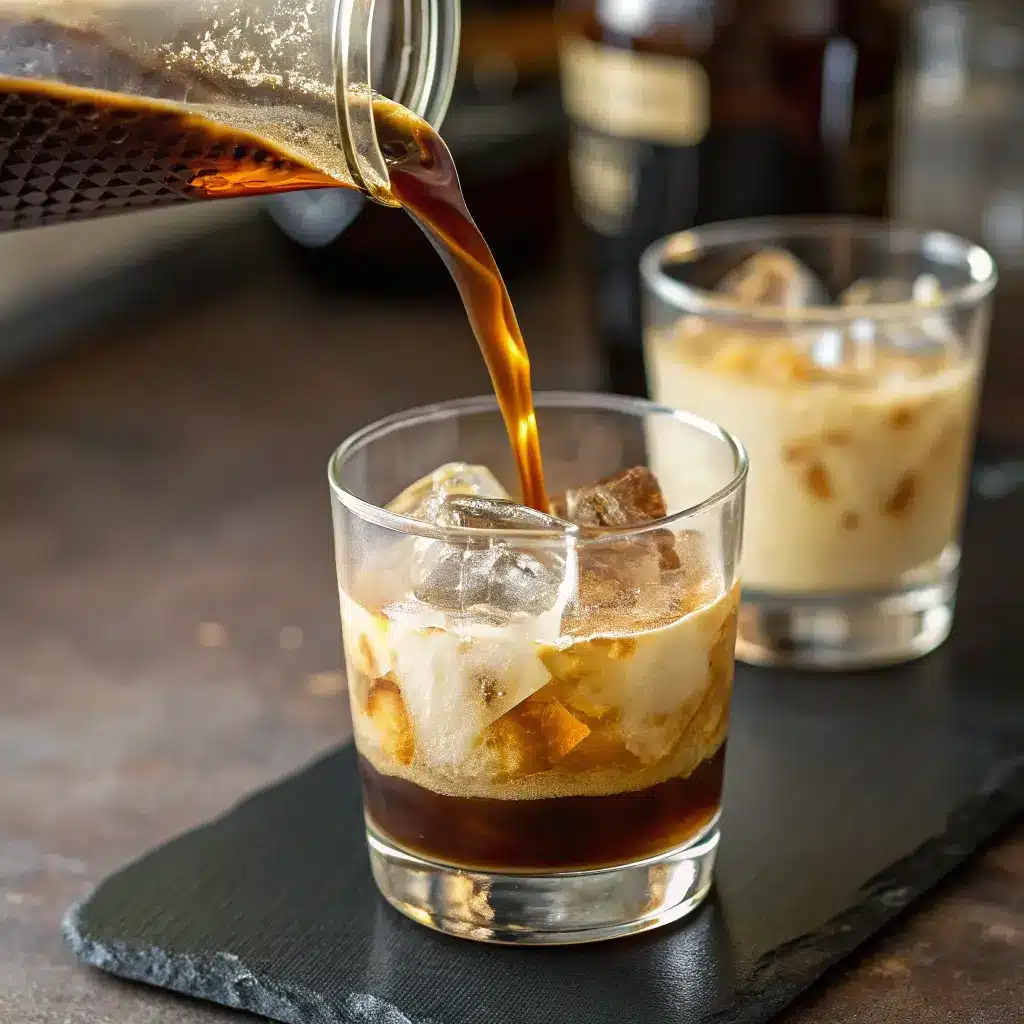
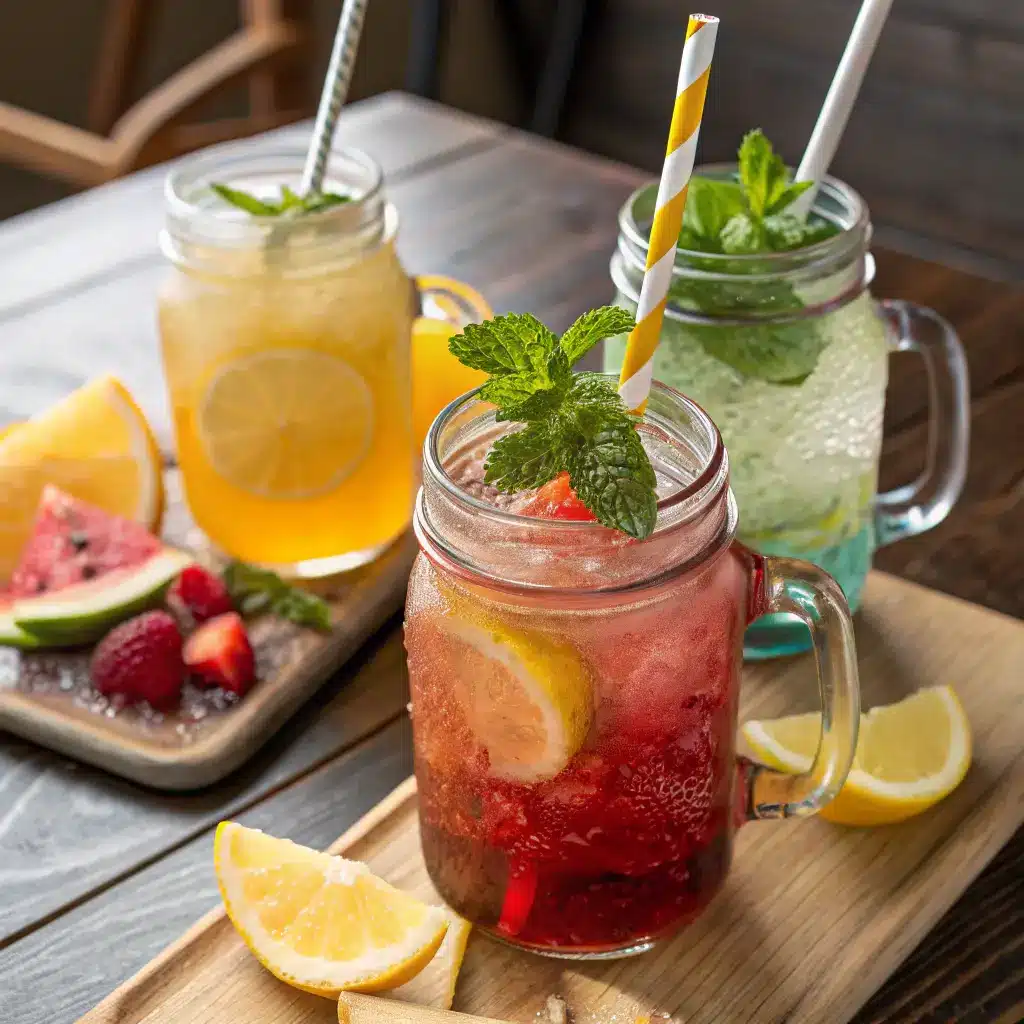

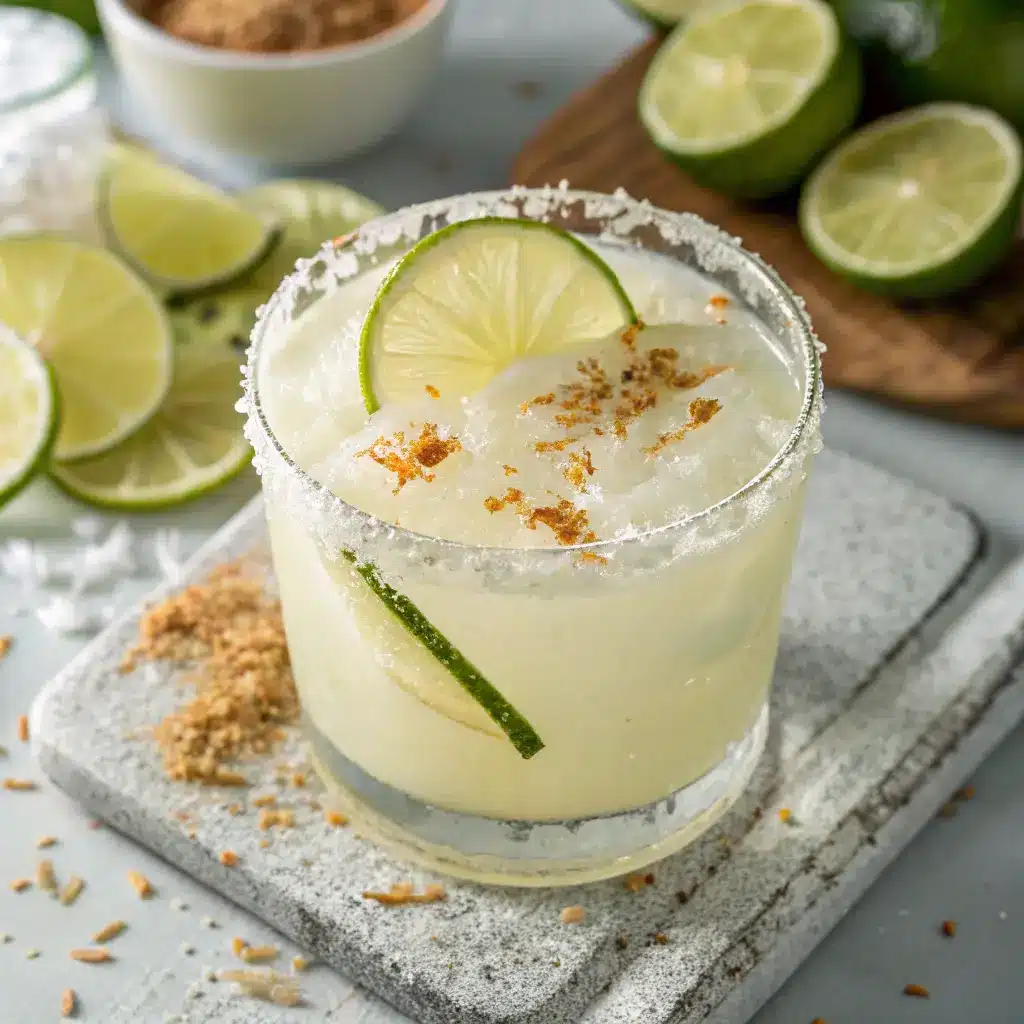

1 thought on “Best Japanese Mounjaro Recipe”
Comments are closed.